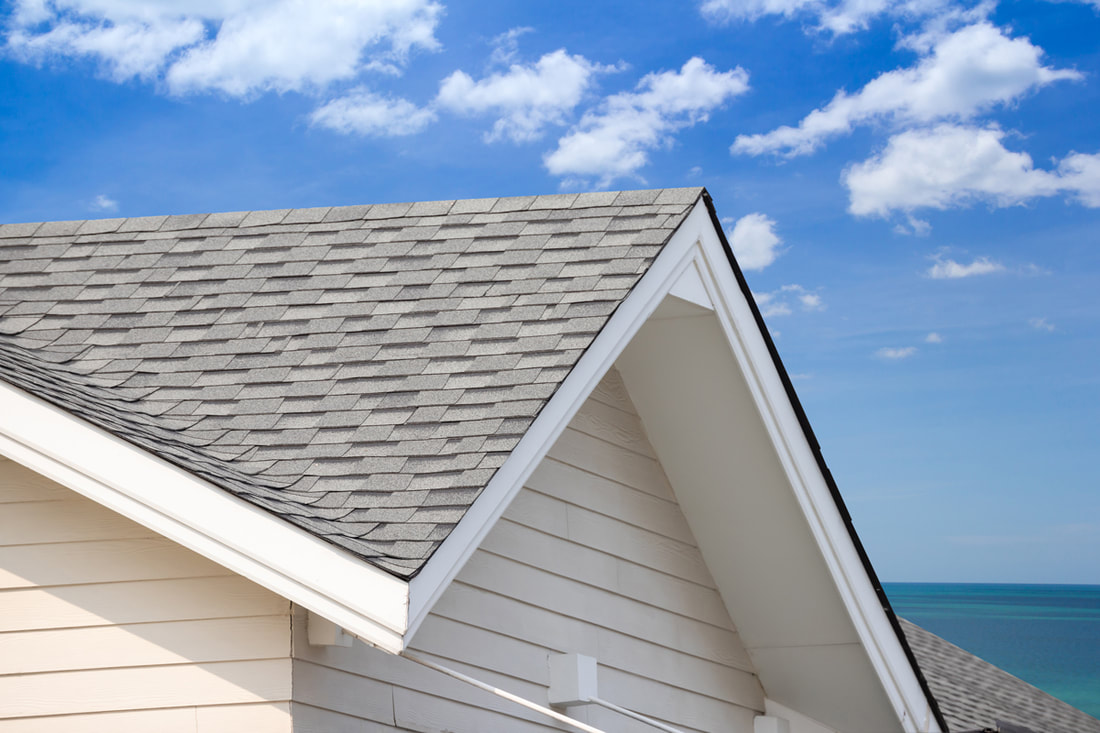What You Need To Know About Re-roofing Low-sloped Roofs

As a homeowner, you need to be concerned about not delaying roof replacement and risking leaks and expensive damage to your home’s interior and contents. That goes without saying. But one thing people often overlook is that, when choosing the material for your new roofing, you have to consider the pitch of the roof.
Considerations for re-roofing a steep-pitched roof were addressed in a previous blog article. Here, we want to focus on re-roofing a low-slope roof.
The Basics About Low-slope Roofs
It’s not just commercial property that has low-slope, or “flat,” roofing. Some residential properties do too, especially modern-style homes built in the 1960s that sometimes have slopes as low as one foot of rise per 12 feet of run (a 1/12 pitch).
But even if your main roof is medium to high in pitch, you may well have a garage or porch covering that is low-pitched. This area of your roof will require a somewhat different approach and maybe different roofing material.
As lower pitches can be more prone to leaking, it is especially crucial that the right material and the right techniques be used. A professional contractor will know how to handle this aspect of roof replacement.
Material Options For Low Pitches
There are as many material options for low-pitch roofs as for “regular” ones (and maybe more.) Sometimes there are fewer viable options with extremely high pitches, but this is no problem with low slopes.
Here are some of the most popular materials used with low-pitched roofs during roof replacement:
- Tar and gravel, or BUR (built-up roofing) is made up of alternating layers of bitumen and reinforcing fabric. It is topped with gravel.
- Torch-down roofing is a single-layer membrane that has its seams sealed by fire during installation.
- EPDM is a form of rubber roofing that is glued onto the roof surface or attached with mechanical anchorages.
- Standing-seam metal roofing uses raised seams to filter water down via gutter-like valleys. It is made of aluminum or steel.
- Rolled roofing, which is similar to asphalt shingles but comes in large rolls. It comes in many colors/styles and sometimes is peel-and-stick.
Installation Of Roll Roofing
The most common low-slope roofing jobs with most homes in Central Florida involve garage, shed, and porch roofs. Most commonly, some form of rolled roofing will be used.
Metal drip edge must be attached along the edges of the area to be roofed first. This drip edge has to go straight into the gutters or else there is a risk of water being diverted underneath the rolled roofing, which could lead to damage to the roof deck and a roof leak.
The roof deck must be clear and clean, and all nails and staples must be pulled out. Any damaged plywood needs to be replaced, and then felt underlayment should be laid down.
Some pieces of rolled roofing may need to be cut to size width-wise besides just for length. The pieces must overlap, beginning at the eaves, so that the roof properly sheds water. Roofing cement should also be used at the seams. Nails may or may not be needed, depending on whether it’s a peel-and-stick type of material.
Don’t overlook those parts of your property that may have low slopes and need special attention during roof replacement. To learn more about re-roofing low-pitched roofs, or for a free, no-obligation quote, contact Sheegog Contracting in Central Florida today!


